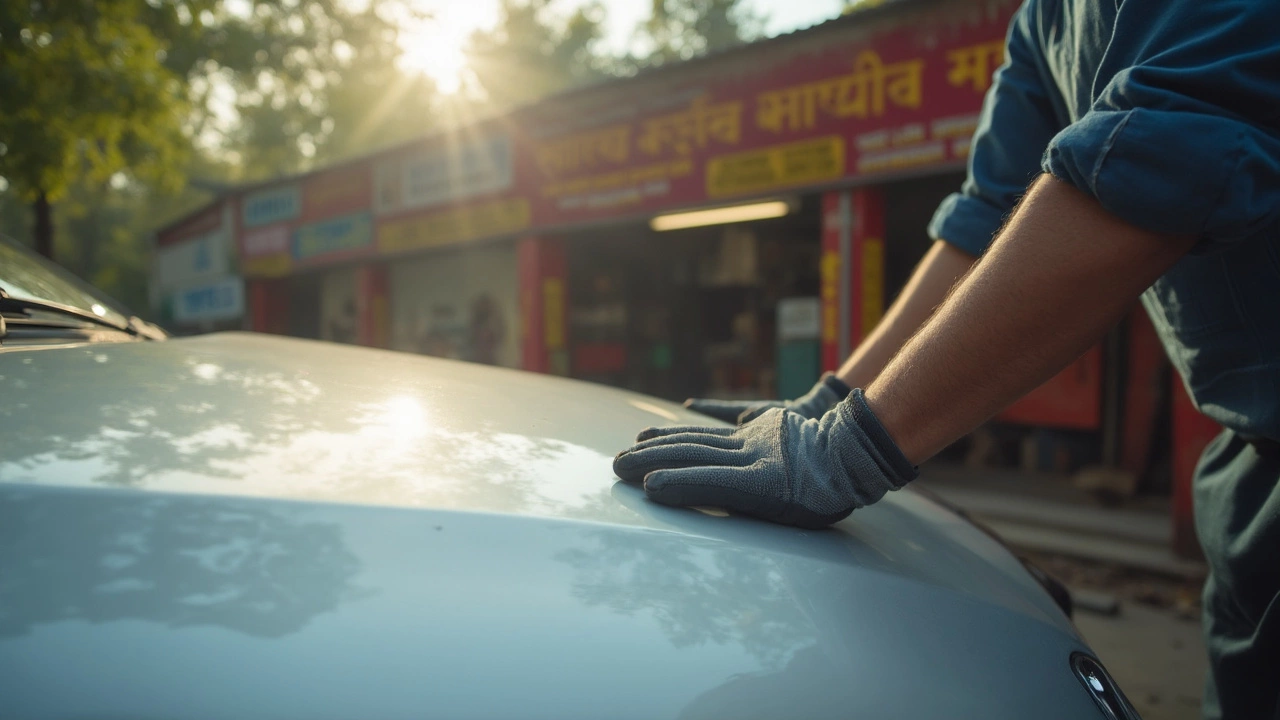Your car starts bouncing a little too much over bumps. Is that just the road, or is something wrong? Suspension problems sneak up on most drivers. You don’t need a mechanic’s toolkit or a physics degree to spot trouble—you just have to know what to look for.
If your ride feels rougher than usual or the car leans awkwardly when turning, these aren’t just quirks. Worn-out suspension can make everyday driving risky, not to mention uncomfortable. Ever notice the car nose-diving when you brake, or maybe the steering feels loose like you’re fighting for control? All red flags you shouldn’t ignore.
Even something as simple as uneven tire wear can tell you a story about your suspension. People often blame potholes, but the real culprit could be under your car, quietly getting worse every day. Ignoring these signs isn’t just about saving cash—it’s about keeping you safe, especially when the road throws surprises your way.
- Everyday Signs Your Suspension Is Failing
- How Suspension Problems Affect Safety
- Home Checks You Can Do Yourself
- Common Causes and Quick Fixes
- When to Get Professional Help
Everyday Signs Your Suspension Is Failing
Wondering what alarms should go off in your head about a bad suspension? You don’t need special equipment to spot the symptoms. If you pay close attention, your car gives you plenty of clues.
- Suspension makes your ride smooth, but if every bump feels like a mountain, it’s one of the first signs of trouble. Persistent bouncing after hitting bumps is usually a dead giveaway your shocks or struts are worn out.
- Notice your car pulling to one side, especially on a straight road? That could be more than just a tire issue. Bad suspension can’t keep your wheels in line, and that makes the car wander.
- Here’s a classic: one corner of your car sits lower than the rest. Park somewhere flat, step back, and give your car a look. If it doesn’t look even, you’re probably dealing with a busted spring or something similar.
- If the wheel feels loose or harder to steer, don’t just brush it off. This can happen if suspension parts like ball joints or bushings are shot.
- A deep clunk or banging noise when you go over a bump? That’s almost never good. It usually means something important is loose or broken underneath—never a good thing at highway speeds.
Let’s talk stats for a minute. According to the National Highway Traffic Safety Administration (NHTSA), suspension-related issues account for about 13% of all car mechanical failures that lead to a crash in the US. People often ignore odd ride noises or weird handling until something nearly goes wrong.
| Suspension Symptom | What It Might Mean |
|---|---|
| Car pulls to one side | Worn shocks, misaligned wheels, or busted springs |
| Excessive bouncing | Worn-out shocks/struts |
| Uneven car height | Broken spring |
| Clunking noises | Failed bushings or ball joints |
| Rough ride over small bumps | General suspension wear |
If you notice one or more of these clues, it’s time to check things out before a small annoyance turns into a big problem.
How Suspension Problems Affect Safety
Bad suspension isn’t just annoying—it can be downright dangerous. When your car’s suspension is shot, it doesn’t just mess with comfort, it can mess with your ability to control your vehicle. Think about this: worn suspension parts mean your tires can lose contact with the road, especially over bumps or sharp turns.
Let’s get real about what that looks like on the highway. Trouble stopping quickly? Bad suspension can increase your stopping distance, and that extra few feet could mean the difference between a close call and a crash. You might notice it’s harder to keep your car steady in wet or windy conditions. That’s because the suspension helps all four tires keep grip, so you stay glued to the street.
Here’s how suspension problems take a toll on safety:
- suspension struggles lead to more body roll in turns. That makes your car feel like it’s swaying or might tip—a sketchy feeling at 60 mph.
- The car can “nose dive” under heavy braking, throwing off your balance and making emergency stops more dangerous.
- Shocks that are worn out can’t keep your tires pressed flat on the asphalt. That means less grip, especially on wet or rough roads.
- You might drift more in your lane. That’s because a bad suspension can make steering less precise.
You don’t have to take my word for it. The National Highway Traffic Safety Administration studied the impact of bad suspension and found that vehicles with suspension troubles are about 50% more likely to lose control in emergency situations.
| Problem | Impact on Safety |
|---|---|
| Worn Shocks/Struts | Increases stopping distance by up to 20% |
| Broken Springs | Car can sag and bounce, making it harder to control |
| Loose Bushings | Leads to unstable or noisy steering |
| Misaligned Suspension | Causes uneven tire wear, loss of traction |
No matter what car you drive, if you think your suspension is bad, it’s not something to wait on. Fixing problems early can keep you safer and save you money in the long run.

Home Checks You Can Do Yourself
You don’t need a fancy garage to catch suspension problems early. There are simple tests you can run in your driveway or right on the curb. Most people can spot big warning signs with just a few minutes and a good look around the car.
Start with the classic bounce test. Push down hard on each corner of your car and let go. If the car keeps bouncing more than 1 or 2 times after you release, your shocks might be worn out. It’s an old-school trick that still works.
Next, take a look at your tires. Uneven wear—especially bald spots or smooth edges—usually means your suspension isn’t holding things steady. Make it a habit to check your tires every month, even if they look fine at a glance.
Roll your car gently forward and listen for clunks or creaks. Those noises, especially after hitting a small bump or turning the wheel, often point to bad bushings or ball joints. Sometimes you’ll even feel these issues through the steering wheel.
- Check for oil or grease leaking near the wheels. Wet spots around your shock absorbers usually mean they’re blown.
- Notice if your car sits lower on one side. Park on flat ground, get out, and step back for a look—if your car leans, a spring or strut could be failing.
- If steering feels loose or the car pulls to one side, you’re likely dealing with suspension parts that need attention.
Drive in an empty parking lot and turn the wheel left and right at low speed. If you hear popping or grinding, that’s a heads-up for suspension or steering trouble.
Don’t skip these checks just because things “seem fine.” Spotting issues now keeps you safer and saves you from bigger bills later.
Common Causes and Quick Fixes
Suspension problems don’t just happen out of nowhere. Most of the time, certain parts wear out because of regular use, rough roads, or just plain old age. Here’s what usually goes wrong—and what you can do about it right away.
- Shocks and Struts Wear Out: These are like the cushions for your wheels. If your ride feels super bouncy or your car dips down when you brake, it’s a classic sign those parts are toast. Quick fix: You’ll need to replace them. Some folks can swap them in an afternoon, but most just hand it off to a pro for safety.
- Bushings and Ball Joints Get Loose: Bushings are little rubber pieces that keep parts from grinding together. Ball joints let your suspension move in all directions. When they wear out, you get weird clunks, loose steering, and shaky rides. Quick fix: A shop can press in new bushings or replace joints pretty fast.
- Tie Rods Start Failing: The tie rod keeps your wheels pointing straight. If it's bad, your steering will get sloppy. Look for uneven tire wear and steering that wanders. Quick fix: Replacing a tie rod is a common repair, but you’ll need an alignment after.
- Broken Springs: Springs actually hold the car up. If you see your vehicle leaning or sagging on one side, a spring could be broken. Quick fix: You’ll need to replace the spring. Don’t drive long like this—handling can get sketchy fast.
Want to see how common these issues are? Here’s what one survey of repair shops reported about suspension part failures in the U.S. over the past year:
| Suspension Part | Percent of Failures (%) | Average Repair Cost ($) |
|---|---|---|
| Shocks/Struts | 42 | 700 |
| Bushings | 18 | 280 |
| Tie Rods | 16 | 250 |
| Springs | 11 | 430 |
If your car is bouncing, squeaking, or just not holding the road like it used to, checking these usual suspects is the smart move. Don’t wait for things to get worse. Quick fixes now can mean fewer headaches and safer drives down the road.

When to Get Professional Help
Some suspension issues are way above a YouTube tutorial or a quick driveway fix. Sure, a bounce test or a peek under the car works for a rough check. But, knowing when things are out of your league can save you from bigger headaches—and bigger bills down the road.
If you spot leaking fluid near your shocks or struts, that’s a huge warning sign. Those parts rely on sealed hydraulic fluid, so if you see puddles or oily dirt on the shocks, you need a pro. Another clue: loud clunking or knocking sounds every time you go over a bump. Messing with suspension mounts or bushings without the right tools can turn risky fast.
Steering issues also need attention. If your steering wheel pulls to one side, shimmies, or feels way too loose, there’s likely a bigger problem than alignment. It could mean damaged tie rods or control arms. These parts aren’t just critical—they’re what keep you on the road, literally.
- Suspension repairs can get pricey. According to AAA, average costs to replace shocks or struts can run from $450 to over $900 for both sides.
- If you’re clocking more than 50,000 miles since your last suspension work, and things feel strange, let a shop check it out.
- Any time the rubber bushings or mounts look cracked or missing, don’t wait for a catastrophic failure before going in.
Check out this quick table to see when calling a pro is the smart move:
| Sign | DIY Safe? | Professional Needed? |
|---|---|---|
| Minor squeaks or creaks | Yes | No |
| Persistent knocking | No | Yes |
| Leaking shocks | No | Yes |
| Car leaning to one side | No | Yes |
| Mild uneven tire wear | Yes (rotate tires) | Maybe |
| Serious steering issues | No | Yes |
Always value your safety over saving a few bucks. If you’re unsure, shops can do a suspension inspection in under an hour. They’ve got the lifts, alignment racks, and training, so you can get back to something more fun than worrying about your car.




